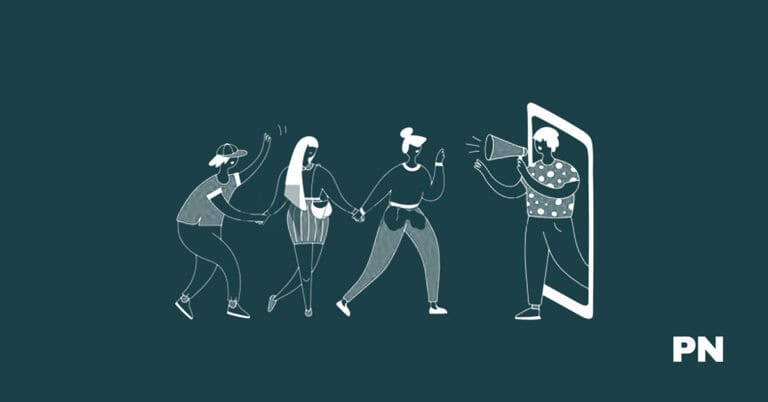55 Stimulating Visual Content Statistics

Visual content is a powerful tool for engaging your audience and conveying your message.
We all know that attention spans are short, and competition for eyeballs is fierce; visual content has become increasingly important.
Did you know articles with images get 94% more views than those without?
That’s just one of the many statistics highlighting visual content’s effectiveness.
Another mind-blowing fact is that video content will account for 82% of all internet traffic by 2025.
This shows the growing importance of video for communication and marketing. Visual content also has a higher retention rate than text alone, with people remembering 80% of what they see compared to just 20% of what they read.
Pretty interesting!
1. Over 50% of marketers agree that visual content is essential to their marketing strategy.
(Source: HubSpot)
This means that visual content has the potential to reach a wider audience and generate more leads for your business.
Visual content is more engaging and memorable than text-only content. In addition, visual content can help improve your website’s SEO.
Search engines like Google prioritize websites with high-quality visual content, which can lead to higher search rankings and more website traffic.
To maximize visual content in your marketing strategy, create high-quality, visually appealing content relevant to your target audience. This can include images, videos, infographics, and other types of visual content.
2. 88% of marketers said they incorporated visual content in more than 50% of published articles.
(Source: Venngage)
Visuals such as images, videos, and infographics can help break up text-heavy content and improve engagement with your audience.
Incorporating visual content into your strategy doesn’t have to be complicated. You can start by selecting high-quality images that are relevant to your content. Infographics are also a great way to present complex information visually appealingly.
When using visual content, remember that it should enhance your message, not distract from it. Ensure your visuals align with your brand and messaging, and avoid using them just because you have them.
3. 34.29% of marketers produce content 10-15 hours a week. And 20.95% of marketers spend more than 20 hours weekly creating content.
(Source: Venngage)
This data highlights the importance of allocating sufficient time and resources to visual content creation.
By dedicating the necessary time, you can produce high-quality visual content that resonates with your target audience and drives engagement.
Consider using Canva, Adobe Creative Cloud, or Piktochart to streamline the content creation. These tools provide templates and design elements that can help create visually appealing content in less time.
4. 32% of all interviewed marketers said they plan to invest 30% of their budget in creating visual content.
(Source: Venngage)
With the rise of social media and other digital platforms, marketers are recognizing the need to create visually appealing content that captures the attention of their target audience.
Investing in visual content can take many forms, from creating eye-catching graphics and videos to developing interactive infographics and animations.
However, you should remember that visual content should be used strategically for your marketing goals. Simply creating visual content for the sake of having it may not yield the desired results.
5. 49% of marketers primarily create visual content for blogs, followed by social channels such as Facebook and Instagram.
(Source: Venngage)
Visual content is more than just pretty pictures. It can help you communicate complex ideas more effectively, increase engagement, and drive conversions.
Creating visual content for your blog can make your content more shareable and improve your search engine rankings.
Social media is another platform where visual content can make a significant impact. With so much content being shared on social media daily, creating eye-catching visuals that stand out is essential.
You can increase your reach, engagement, and brand awareness by creating visual content for social media.
6. 50% of marketers leverage video in their marketing strategy, followed closely by images at 47%.
(Source: HubSpot)
Video marketing has become increasingly popular in recent years due to its ability to engage and captivate audiences.
Videos are versatile and can be used in various ways, from product demos and testimonials to brand storytelling and educational content. They can be shared on social media, embedded on websites, and used in email marketing campaigns.
Images, on the other hand, are a more traditional form of visual content that has endured. They are easy to create and can be used in various ways, from social media posts and blog articles to website banners and email newsletters.
They can also be optimized for search engines, making them a valuable tool for improving online visibility.
While video and images are the most popular forms of visual content, other types, such as infographics, GIFs, and memes, are also gaining popularity. The key is choosing the visual content that best fits your brand and your target audience.
7. 54% of marketers are using AI for their content game.
(Source: CleverTap)
AI can help marketers in various ways. For example, it can analyze data to identify patterns and insights, automate repetitive tasks, and personalize content for individual users. This can lead to more effective and efficient marketing campaigns.
One way AI is being used in content marketing is through chatbots. Chatbots use natural language processing (NLP) and machine learning to engage with customers in real-time.
They can answer questions, provide recommendations, and even make purchases on behalf of the customer.
Another way that AI is being used in content marketing is through predictive analytics. Predictive analytics uses machine learning algorithms to analyze data and predict future outcomes.
8. About 42% of marketers churn out up to 10 pieces of visual content each week.
(Source: Venngage)
If you’re a marketer, you know the importance of visual content. It’s a powerful tool that can help you attract and engage your target audience.
But creating visual content isn’t always easy. It requires time, effort, and resources.
That’s why having a plan in place and a clear understanding of your target audience is essential. You need to know what type of visual content they prefer, what platforms they use, and what message you want to convey.
9. A third of marketers find producing visual content consistently is their biggest struggle with content production.
(Source: HubSpot)
There are several reasons why producing visual content consistently can be challenging.
First, creating high-quality visual content requires time and resources. You must invest in tools, software, and equipment to produce visually appealing content that engages your audience.
Creating visual content that aligns with your brand’s message and values requires careful planning and execution.
Second, the demand for visual content is increasing rapidly. With the rise of social media and other digital platforms, consumers have become accustomed to consuming visual content regularly.
As a result, you need to produce a high volume of visual content to keep up with the demand.
Third, producing visual content that stands out from the competition can be challenging. With so much online visual content, you must create unique and compelling visuals that capture your audience’s attention and stand out.
To overcome these challenges, you must develop a comprehensive visual content strategy aligning with the brand’s goals and values.
By investing in the right tools and resources and planning your visual content, you can consistently produce high-quality visual content and effectively engage your audience.
10. Video is the most popular and effective media format.
(Source: Agility PR Solutions)
One of the main advantages of video is that it allows you to tell a story and evoke emotions in a way that other media formats cannot.
Video combines visuals, audio, and motion to create a more immersive experience for the viewer. As a result, videos have higher engagement rates than other media formats.
Another advantage of video is that it is shareable and can be easily distributed across multiple platforms. This means that your video content has the potential to reach a wider audience and drive more traffic to your website.
In addition, video is also effective for educating and informing your audience. Whether creating a product demo, a how-to tutorial, or a training video, video allows you to visually demonstrate concepts and processes in a way that is easy to understand.
11. Long-form videos above 30 minutes, like webinars and live events, saw over 11,000% growth over the past decade, making it the fastest-growing video segment.
(Source: HubSpot)
So why are long-form videos so popular?
One reason is that they allow for a more in-depth topic exploration. Unlike shorter videos, which may only scratch the surface of a subject, long-form videos will enable you to dive deep and explore a topic in detail.
This can be particularly appealing for audiences looking for more than just a quick overview.
Another advantage of long-form videos is that they can be a great way to build trust with your audience. By providing in-depth information on a subject, you can establish yourself as an expert in your field and build credibility with your viewers.
This can be especially important if you’re trying to sell a product or service, as viewers are likelier to buy from someone they trust.
Of course, creating long-form videos can be time-consuming and expensive. But with the potential for such impressive growth, it’s worth considering if you want to make an impact with your video content.
12. 36.7% of businesses publish video content monthly and 24.3% weekly, while just 14.5% of businesses don’t publish video content at all.
(Source: Buffer)
You’re not alone if you want to incorporate video content into your business strategy. Nearly two-thirds of businesses regularly create and share video content.
However, it’s worth noting that not all businesses are on board with video content just yet. While this may seem like a small percentage, it’s essential to consider the potential impact video content can have on your business.
One reason businesses may be hesitant to publish video content is the perceived cost and complexity of production.
However, with the rise of user-friendly video editing software and the increasing availability of affordable equipment, creating high-quality video content has never been more accessible.
Additionally, the benefits of video content are hard to ignore. Now is the time to start if you’re not already incorporating video content into your business strategy.
13. According to marketers, Original graphics like infographics and illustrations perform best.
(Source: Venngage)
Infographics, in particular, are a great way to present complex information in an easy-to-digest format.
They allow you to condense much data into a single image, which can be shared on social media and other platforms. Infographics also tend to be highly shareable, which can help you reach a wider audience.
Conversely, Illustrations can be used to add personality and style to your visual content.
They can help you stand out from your competitors and create a more memorable brand image. Illustrations can also simplify complex concepts and make them more accessible to your audience.
14. Stock photos perform the worst out of all visual formats.
(Source: HubSpot)
One reason for this is that stock photos lack authenticity. They often depict generic and overused images that fail to connect with the audience, and as a result, they can come across as fake or insincere.
Moreover, stock photos are not tailored to the specific needs of your audience or brand. They may not accurately represent your brand’s message or values, which can lead to confusion and disinterest.
Another issue with stock photos is that they can be expensive.
Many stock photo websites charge high fees for their images, which can be a significant investment for small businesses or individuals.
Consider using original images or custom graphics to create more compelling visual content. These types of visuals can be tailored to your brand’s message and values, and they can be more engaging and authentic to your audience.
15. Original graphics are the most used type of visual content by marketers at 36%, followed by stock photos at nearly 34%.
(Source: Venngage)
Original graphics are unique and customized to fit the brand’s message. They can convey complex information simply and engagingly.
Moreover, original graphics can be easily shared on social media platforms, making them a valuable asset for any marketing campaign.
On the other hand, stock photos are the second most used type of visual content. Stock photos are readily available and can complement the brand’s message. They are also cost-effective compared to original graphics, which makes them a popular choice for small businesses.
However, stock photos have their limitations. They are not unique and may not fully represent the brand’s message. Moreover, they can be overused and may not stand out from other marketing campaigns.
16. Infographics are the fourth most-used type of content marketing.
(Source: HubSpot)
Infographics are visual representations of information or data designed to be easily understood by the viewer.
They are a great way to communicate complex information simply and engagingly. They can illustrate statistics, explain processes, or showcase products and services.
One reason infographics are so popular is that they are highly shareable. People are more likely to share visual content on social media than text-based content, which means that infographics have the potential to reach a wider audience than other types of content.
Another advantage of infographics is that they can help to improve SEO. Infographics are often shared on other websites and blogs, which can lead to backlinks to your website.
Backlinks are essential for SEO because they signal to search engines that your website is a credible source of information.
17. People who follow instructions containing text and visuals do 323% better than those without illustrations.
(Source: Springer)
Using visuals can be a game-changer in learning and retaining information.
Visuals can come in many forms, such as diagrams, charts, infographics, and videos. They can help break down complex information into digestible pieces, making it easier for the brain to process and retain.
Visuals are so compelling because they can appeal to different learning styles. Some people are visual learners and need to see something to understand it fully.
Others may be auditory learners and prefer to hear information, while some are kinesthetic learners and need to interact with something to learn it physically.
Using a combination of text and visuals can improve comprehension, retention, and engagement, leading to better outcomes.
18. While 50.48% of marketers get help from in-house designers when creating visual content, most marketers (51.43%) design visual content using advanced design software.
(Source: Venngage)
Most marketers use advanced design software to design their visual content. This trend is likely due to the increasing accessibility of design software and the growing importance of visual content in marketing.
You can create professional-quality visual content with the right tools and skills without needing in-house designers.
While using design software may be more cost-effective and efficient, it is crucial to ensure that your visual content aligns with your brand and messaging. This can be achieved by working closely with in-house designers or outsourcing to professional designers.
19. In 2024, original infographics drove more engagement than other types of visual content.
(Source: Venngage)
This is likely because original infographics are unique and tailored to a specific audience, making them more relevant and exciting to viewers.
In addition, original infographics allow for more creativity and customization, making them stand out from other types of visual content. They can also be more effective in conveying complex information in a visually appealing and easy-to-understand way.
20. 65% of B2B Marketers Use Infographics in Their Marketing Campaigns.
(Source: Content Marketing Institute)
If you’re a B2B marketer, you might want to consider using infographics in your marketing campaigns.
Infographics are a great way to present complex information in a visually appealing and easy-to-understand format. They can help you communicate your message more effectively and engage your audience in a way that text alone can’t.
Infographics can also be a powerful tool for driving traffic to your website and generating leads.
In fact, according to one study, infographics are liked and shared on social media three times more than any other type of content. So, if you want to spice up your B2B marketing campaigns, consider using infographics.
21. 68% of Marketers Reported That They Plan to Increase the Use of Visuals in Their Marketing Campaigns.
(Source: Social Media Examiner)
If you want to improve your marketing campaigns, consider incorporating more visuals into your content. Visuals are more engaging and memorable than plain text.
One way to incorporate more visuals into your marketing campaigns is by using images. Images can help break up large blocks of text and make your content more visually appealing. You can also use infographics to present complex information in a more digestible format.
Another way to incorporate visuals into your marketing campaigns is to use videos. Videos can showcase your products or services, educate your audience, or entertain them. They can also be shared on social media platforms, which can help increase your brand’s visibility.
Finally, you can incorporate visuals into your marketing campaigns using user-generated content (UGC). UGC is any content your audience creates, such as photos or videos.
By incorporating UGC into your marketing campaigns, you can show your audience that you value their input and actively listen to them.
22. Personalized imagery has been shown to decrease cart abandonment rates by 17% and improve conversion rates by 200%.
(Source: Hyperise)
Cart abandonment is a common problem in e-commerce that can hurt your bottom line. Fortunately,
Personalized imagery refers to images tailored to the individual user based on browsing and buying history, location, and other data. By showing customers relevant and personalized images of their interests, you can increase the likelihood that they will make a purchase.
So, how can you implement personalized imagery on your website? Using data and analytics to understand your customers’ preferences and behavior is one way.
Then, you can use this information to create targeted imagery more likely to resonate with them.
Another option is using artificial intelligence (AI) and machine learning to generate personalized imagery based on user data automatically. This can help you scale your personalization efforts and improve your conversion rates.
23. On average, people retain 55% more information when it is paired with an image.
(Source: Blogging Wizard)
This is because our brains can process images much faster than text and are more likely to remember visual information.
This is why visual content is crucial for businesses and marketers. Whether infographics, videos, or images, visual content can help you communicate your message more effectively and improve engagement with your audience.
24. One study found that articles with images were twice as likely to be shared.
(Source: BuzzSumo)
This makes sense when you consider that visual content is more engaging and easier to digest than plain text. Images can help break up long blocks of text and make your article more visually appealing. They can also help convey complex information more understandably.
But not all images are created equal. To maximize the impact of your visual content, ensure your photos are high-quality, relevant to your topic, and properly optimized for the web.
You can also experiment with different types of visual content, such as infographics, charts, and videos, to see what resonates best with your audience.
25. Over 50% of consumers watch product videos before they make a purchasing decision.
(Source: OptinMinder)
Product videos provide consumers with a closer look at your product, allowing them to see it in action and better understand how it works.
They can also help build trust and credibility with your audience, as they provide an opportunity to showcase your product’s quality and features.
Including product videos in your marketing strategy can improve your sales chances. Studies have shown that product videos can increase conversion rates by up to 80%.
To maximize your product videos, ensure they are high-quality and provide valuable information to your audience. Consider including demonstrations, customer testimonials, and other relevant information to help your audience make an informed purchasing decision.
26. Users are 30% more likely to send payment when visuals are involved with your marketing.
(Source: Xerox)
Regarding marketing, visuals are an essential part of the game. They are a powerful tool that can help you attract and retain customers.
Visuals can take many forms, including images, videos, infographics, etc. They help to convey your message in a way that is easy to understand and remember. When users see visuals, they are more likely to engage with your content and take action.
27. Regarding B2B, 79% of people say they’ve been convinced to purchase an app or software because of a video.
(Source: HubSpot)
Videos are powerful tools for demonstrating how your software or app works. They can help potential buyers understand its features more engagingly.
Videos can also help build trust and credibility with your audience, as they can see the software or app in action.
Videos are effective and relatively easy to create. You can make a simple demo video using screen recording software or hire a professional production company to create a more polished video.
With most buyers saying they’ve been convinced to purchase after watching a video, visual content can be a powerful tool in B2B sales.
28. 64% of marketers reported landing a new customer by posting a video in the last 12 months.
(Source: Animoto)
This is a significant number, showing that video content can be a powerful tool for businesses.
One reason why videos are so effective is that they can convey a lot of information in a short amount of time.
For example, a 30-second video can show your product or service in action, highlight its benefits, and provide a call to action. This is much more efficient than a long blog post or a series of images.
Another advantage of videos is that they can be shared easily on social media. If your video is engaging and informative, people are likelier to share it with friends and followers. This can help you reach a wider audience and attract new customers.
29. Social media videos are the most common type of video marketers create at 71%, followed by explainer videos at 70%.
(Source: HubSpot)
It’s important to note that while social media and explainer videos are the most popular types of video content, many other formats exist.
Some other popular types of video content include product demos, customer testimonials, and how-to videos.
When creating video content, you must consider your audience and what content will resonate most with them. Creating engaging and informative videos can increase brand awareness and drive more traffic to your website.
30. 96% of consumers have watched an explainer video to learn more about a product.
(Source: Running Pony)
Explainer videos are short, concise videos that explain a product or service in a way that is easy to understand. They can be used to showcase the features and benefits of a product, as well as to demonstrate how it works.
By using visuals and clear, concise language, explainer videos can help potential customers quickly understand the value of a product and how it can benefit them.
One key benefit of explainer videos is their versatility. They can be used on various platforms, including social media, websites, and email marketing campaigns. This makes them an effective tool for reaching a broad audience and driving engagement.
Explainer videos can be effective in educating potential customers and can also help businesses build trust and credibility.
By clearly and concisely showcasing a product’s features and benefits, businesses can demonstrate their expertise and establish themselves as trusted authorities in their industry.
31. 84% of consumers agree that watching promotional videos has convinced them to purchase a product or service.
(Source: WyzOwl)
Promotional videos are potent tools for showcasing your products or services and creating an emotional connection with your audience. They can help you communicate your brand’s message more effectively and increase conversion rates.
Promotional videos are compelling and versatile. You can use them on your website, social media, email campaigns, and in-store displays.
This means you can reach your audience wherever they are and increase your chances of making a sale.
32. 81.2% of businesses share video content on Facebook, followed by YouTube (62%) and Instagram (57.8%).
(Source: Buffer)
This data highlights the importance of video content in social media marketing. With so many businesses utilizing these platforms, creating high-quality, stand-out videos is crucial.
Whether you’re sharing product demos, behind-the-scenes footage, or customer testimonials, video content can help you connect with your audience and build brand awareness.
33. 75% of adults in the US watch short-form video content on a mobile device.
(Source: eMarketer)
Short-form video content is defined as video content that is less than three minutes in length. This type of content is perfect for mobile devices because it can be consumed quickly and easily.
It’s also highly shareable, which means that it has the potential to go viral and reach a much larger audience than other types of content.
You can create many types of short-form video content, including product demos, how-to videos, behind-the-scenes footage, and more. Ensure your content is engaging, informative, and visually appealing.
Optimizing your short-form video content for mobile devices will ensure it reaches the right audience.
34. 33% of marketers leverage short-form video content in their marketing strategy.
(Source: HubSpot)
Short-form videos are typically less than 2 minutes long and can be easily shared on social media platforms. They are an effective way to capture your audience’s attention and convey your message concisely and engagingly.
35. Short-form video has the highest ROI of all marketing trends.
(Source: HubSpot)
Regarding marketing trends, short-form video has emerged as the most effective form of visual content.
One compelling reason for using short-form video is that it allows you to convey your message quickly and efficiently. Another is that it is highly shareable.
When viewers enjoy a short-form video, they are likelier to share it with their friends and followers on social media, which can help increase brand awareness and drive traffic to your website.
36. Most short-form videos are under 60 seconds and have the highest average engagement.
(Source: HubSpot)
According to recent statistics, short-form videos have an average engagement rate of 0.26%, while longer videos have an average engagement rate of 0.15%. This means short-form videos are more likely to grab your audience’s attention and keep them engaged.
Short-form videos are also a great way to showcase your brand’s personality and creativity.
You can use them to highlight your products or services, share behind-the-scenes glimpses of your business, or entertain your audience.
37. Video is the number one form content marketers want to learn more about.
If you’re a content marketer, you know that video is becoming increasingly important in the industry. It’s no surprise that more and more marketers are turning to video to engage with their audience.
38. 73% of surveyed marketers said they plan to increase their video usage.
(Source: Buffer)
This indicates the growing importance of visual content in the digital landscape.
Using videos in marketing campaigns has proven effective in engaging audiences and driving conversions. It allows businesses to showcase their products or services more interactively and engagingly, leading to better customer engagement and retention.
39. 91% of interviewed marketers said that investing in video marketing on social media paid off for them. 85% of marketers find posting videos on social media platforms a successful way of gaining an audience online. 93% of businesses gained new customers by posting videos on social media platforms.
(Source: Animoto)
If you’re looking to expand your reach and attract new customers, video marketing on social media platforms is a powerful tool to consider. According to recent studies, most marketers and businesses have succeeded with this strategy.
This is likely because videos are highly engaging content that can capture people’s attention and hold it longer than other types of content.
40. Videos are a big hit on Twitter. Videos are six times more likely to be retweeted than photos.
(Source: X (Formerly Twitter))
Regarding visual content on Twitter, videos are the clear winner. This means that if you want your content to go viral on Twitter, videos are the way to go.
With a video, you can tell a story, demonstrate a product, or share a message more compellingly than a static image. This is especially true on Twitter, where users are scrolling through their feeds rapidly.
A video is more likely to catch their attention and encourage them to stop and watch.
41. Facebook’s survey found that people under 45 are likelier to watch video content on mobile devices.
(Source: Facebook)
If you’re targeting a younger audience, knowing that people under 45 are more likely to watch video content on mobile devices is essential.
This trend is essential when creating visual content for social media platforms like Facebook, Instagram, and Twitter. It’s crucial to optimize your videos for mobile devices by using the correct aspect ratio, resolution, and file format.
42. Facebook is the most popular social media platform, used by 64% of marketers. Additionally, it has the best ROI compared to other social media platforms.
(Source: HubSpot)
If you’re a marketer, you’re probably well aware of the importance of social media in your overall marketing strategy. And if you’re looking for a social media platform to focus on, it’s hard to ignore Facebook.
However, not just popularity makes Facebook a great choice for marketers. It also has the best ROI compared to other social media platforms.
A study found that Facebook ads have an average ROI of 152%, significantly higher than other social media platforms like Twitter and LinkedIn.
43. A video posted on Facebook receives 135% more organic reach than an image posted on Facebook.
(Source: Emplifi)
When it comes to social media, visual content is king. Facebook has over 2 billion active users, and it’s no secret that video is one of the platform’s most engaging types of content.
This is because videos are more likely to catch users’ attention as they scroll through their newsfeeds. Videos are also more likely to be shared, liked, and commented on, which can increase their reach even further.
You should incorporate video content into your social media strategy to increase your organic reach on Facebook.
44. One billion hours of YouTube videos are consumed daily.
(Source: WSJ)
This statistic alone is a testament to YouTube’s popularity and the power of visual content.
YouTube is an excellent platform for businesses and individuals to share visual content. Whether creating videos to promote your product or service or simply sharing your personal experiences, YouTube allows you to reach a broad audience.
45. Viewers gaze five times longer at video content on Facebook and Instagram than at other types of content.
This means that video content is the best way to capture your audience’s attention and keep them engaged.
Whether it’s a product demo, a behind-the-scenes look, or a how-to tutorial, video content is more likely to be watched, shared, and remembered than any other type.
46. On average, people watch 17 hours of video content per week.
(Source: HubSpot)
This trend is not surprising, given the increasing availability of video content across various platforms.
Videos are everywhere, from social media to streaming services, leading to a significant shift in the way people consume information and entertainment.
It’s an effective way to engage with your audience and increase brand awareness. With the increasing availability of video content, creating high-quality videos that stand out from the crowd is essential.
47. For videos up to 5 minutes long, viewers will watch about 50% of the content.
(Source: Wistia)
This means ensuring that the most critical information is presented at the beginning of the video is crucial.
It is also essential to ensure the video is visually appealing and easy to follow. Eye-catching graphics, animations, and text can help keep viewers engaged and interested in the content.
Additionally, it is crucial to ensure the video is optimized for mobile devices. With more and more people watching videos on their smartphones and tablets, it is vital to ensure that the video is easy to view on smaller screens.
48. 91% of consumers want more online videos from brands.
(Source: HubSpot)
Video content is a great way to engage with your audience. If you’re not already incorporating video into your marketing strategy, you could miss out on a huge opportunity to connect with potential customers.
One of the main reasons why video content is so popular is because it’s easy to consume. Unlike written content, which requires your audience to read and process information actively, video content can be watched passively.
This means that your audience can absorb your message without having to put in a lot of effort.
49. Live video accounts for 5% of internet video traffic.
If you’re not already using live video as part of your content marketing strategy, you might miss out on a significant portion of your potential audience.
Live video has become increasingly popular in recent years, thanks partly to the rise of social media platforms like Facebook, Instagram, and YouTube. These platforms have made it easier for businesses and individuals to broadcast live video content to their followers.
One of the most significant advantages of live video is its ability to create a sense of urgency and excitement among viewers. Unlike pre-recorded video content, live video happens in real-time, making it more authentic and engaging.
Another advantage of live video is its ability to generate higher levels of engagement than other types of content.
According to one study, live video generates six times more interactions than pre-recorded video content.
50. Marketers’ usage of live videos on social media platforms has increased to 35%, compared to 28% in 2023.
As a marketer, you’re likely aware of incorporating visual content into your social media strategy. One type of visual content that has been gaining popularity among marketers is live videos.
Live videos allow you to connect with your audience in real time, creating a sense of authenticity and transparency.
This type of content also allows for immediate feedback and interaction, making it a valuable tool for building customer relationships.
51. YouTube is the most popular social media platform among teenagers, with 95% of Americans ages 13 to 17 using it. TikTok is the second most popular platform, with 67%.
(Source: Pew Research)
Knowing which social media platforms your target audience uses is essential as a marketer or content creator.
If you’re targeting teenagers with your visual content, consider using both YouTube and TikTok. However, note that content that performs well on one platform may not perform well on the other.
Tailoring your content to the platform you’re using and the audience you’re targeting is essential.
52. In a poll of over 350 consumers, 56% said they “sometimes” watch Instagram Stories with the sound on, while 29% said they “always” do this.
(Source: HubSpot)
This means that if you’re creating content for Instagram Stories, considering sound is essential. While some viewers may be watching with the sound off, a significant portion of your audience will watch with the sound on.
Consider adding captions or text overlays to your Instagram Stories to ensure your content reaches the maximum number of viewers.
This can help ensure that viewers watching with the sound off can still understand and engage with your content.
53. Of the Instagram Story formats people prefer most, 35% say they often use short narrative Stories with photos, videos, and text.
(Source: HubSpot)
People share their content in various formats on Instagram Stories. From polls to quizzes, Instagram offers a range of interactive features to keep users engaged.
However, short narrative-styled Stories with photos, videos, and text seem to be the most popular among users. Incorporating short narrative-styled Stories into your content strategy could be a great way to engage your audience on Instagram.
By sharing a sequence of photos or videos that tell a story or share information, you can capture your audience’s attention and keep them engaged with your brand.
54. Users who saw immersive, actionable ads on Pinterest were 59% more likely to recall that brand.
(Source: Pinterest)
One reason for this increase in brand recall is Pinterest’s immersive nature. The platform is designed to showcase visually appealing content, making it easier for users to engage with the ads.
Additionally, Pinterest has a high level of user engagement, with users spending an average of 14.2 minutes per session on the platform.
Another factor contributing to the success of Pinterest ads is their actionable nature. Pinterest ads are designed to encourage users to act, whether purchasing or visiting a website.
55. The click-through rate of a meme campaign is 14% higher than email marketing.
(Source: Forbes Council)
When creating engaging visual content, memes have become increasingly popular in recent years.
Not only are they a fun way to connect with your audience, but they can also be an effective way to drive traffic to your website.
According to recent statistics, the click-through rate of a meme campaign is higher than email marketing. Incorporating memes into your marketing strategy could be a smart move if you want to increase your website traffic and engagement.
Frequently Asked Questions on Visual Content Statistics
What impact does visual content have on social media engagement?
Posts with images or videos receive higher engagement rates than text-only posts. According to recent studies, tweets with images receive 150% more retweets than those without, and Facebook posts with images receive 2.3 times more engagement than those without. Visual content is more likely to catch users’ attention as they scroll through their feeds, and it can help convey a message or emotion more effectively than text alone.
How does visual content influence consumer behavior?
Visual content can influence consumer behavior in several ways. It can help to create an emotional connection with the audience, increase brand awareness, and influence purchasing decisions.
How has visual content marketing evolved over the past year?
There has been an increase in user-generated content, influencer marketing, and interactive content. Brands also focus on creating more authentic and relatable content that resonates with their audience. Virtual and augmented reality are also becoming more prevalent in visual content marketing.
What role does visual storytelling play in brand perception?
Visual storytelling plays a crucial role in brand perception. It allows brands to communicate their values, mission, and personality engagingly and memorably. Through visual storytelling, brands can connect emotionally with their audience, increasing brand loyalty and trust.
What are the comparative engagement rates for images versus text in online content?
Images generally receive higher engagement rates than text in online content. According to a study by BuzzSumo, Facebook posts with images receive 2.3 times more engagement than those without, and tweets with images receive 150% more retweets than those without.
Disclosure: We may earn commissions if you buy via links on our website. Commissions don’t affect our opinions or evaluations. We’re also an independent affiliate of many platforms, including ClickFunnels, Kartra, GoHighLevel, Podia, Northwest Registered Agent, and others. We’re not employees of these services. We receive referral payments from them, and the opinions expressed here are our own and are not official statements of these companies.





